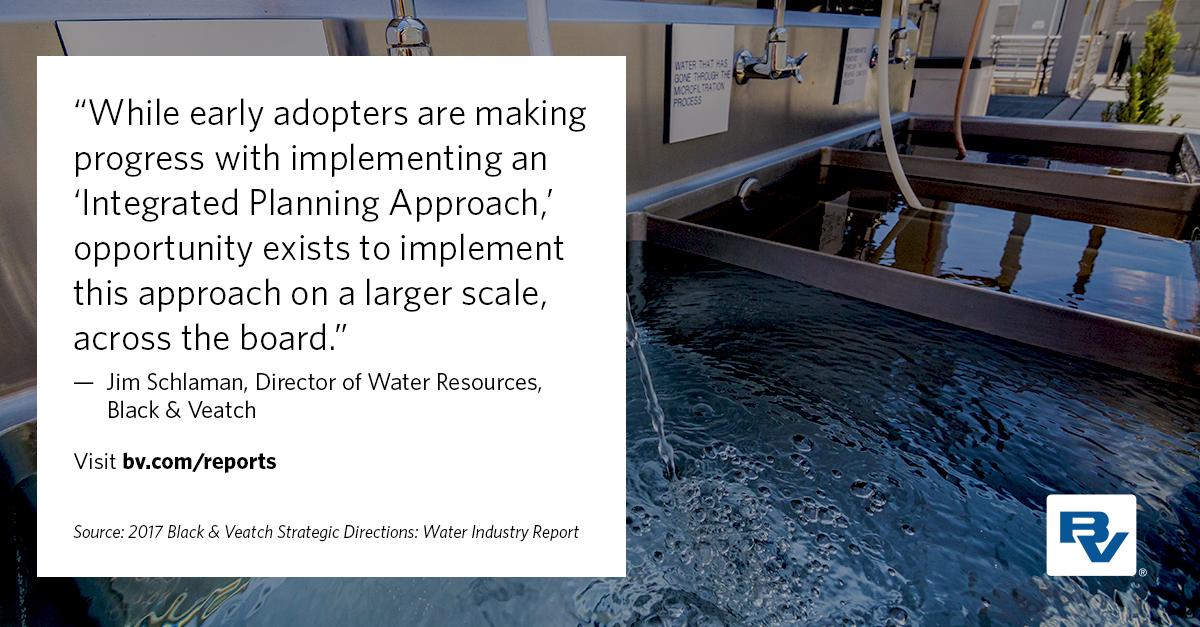Elevating Water Services and Achieving Compliance through Integrated Planning

Elevating Water Services and Achieving Compliance through Integrated Planning
Integrated planning has gained significant attention in the water industry over the last five years. This year’s Strategic Directions: Water Industry Report survey shows that while early adopters are making progress with implementing an “Integrated Planning Approach,” opportunity exists to implement this approach on a larger scale, across the board.
Integrated planning can help water utilities meet compliance standards set forth by the EPA and also establish long-term, sustainability solutions that improve water quality, ensure protection of water resources and support community needs.
Download the 2017 Water Industry Report
Nearly one-third (32 percent) of utilities and/or agencies are currently relying on integrated planning to develop holistic stormwater/wastewater capital improvement strategies. However, 33 percent of survey respondents said they do not rely on integrated planning, and
35 percent “do not know what the Integrated Planning Approach is.” Integrated planning appears to trend higher among larger communities; the larger the population, the greater the rate of adoption. This could be due to more stringent regulations in for larger utilities, but water providers of all sizes could benefit from a more integrated approach.
Early adopters include organizations in Northern Kentucky and Springfield, Missouri, that are implementing plans that align compliance standards with similar water management challenges that affect their communities.
If leveraged correctly, this strategy can achieve more effective results, better balance stakeholders’ varying priorities, allow enterprise asset management to be considered in community affordability calculations, lower costs and drive water quality compliance. Additionally, integrated planning frameworks that include smart technology can be even more effective at supporting sustainable, energy-efficient and resilient water infrastructure. Eliminating silos and developing more holistic and cost-effective watershed management strategies is a win-win for all community stakeholders.

